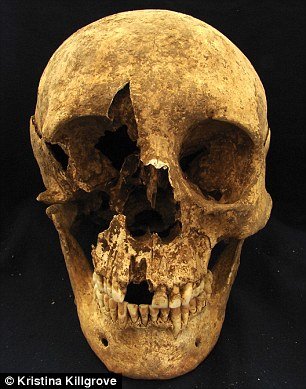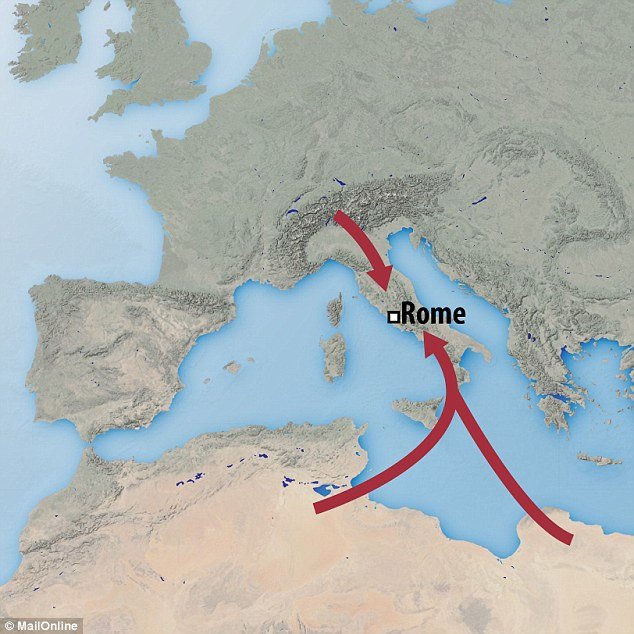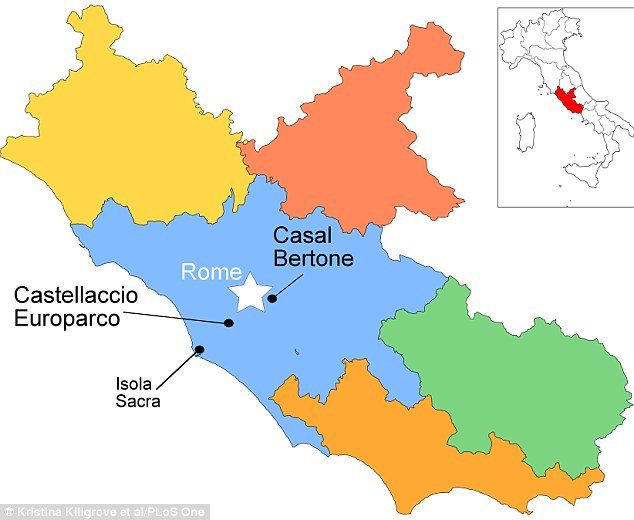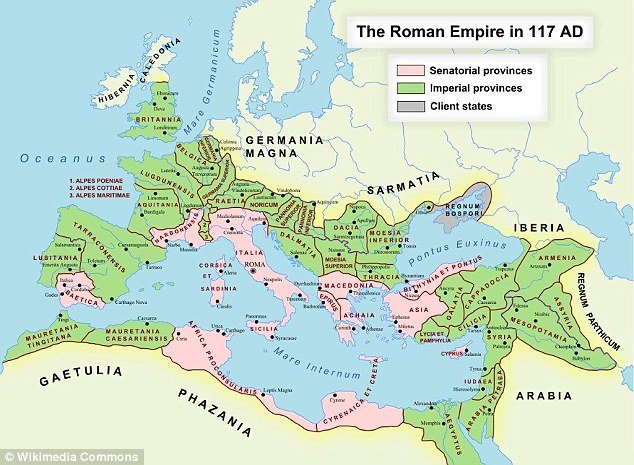
A new study has suggested Rome was attracting immigrants from the furthest reaches of its empire and beyond 2,000 years ago.
Analysis of skeletons found buried in two ancient cemeteries of the city dating from the first to the third centuries AD showed eight of them were from as far away as North Africa and the Alps.
The migrants, who were mostly children and men, were buried in simple graves and appear to have been poor, suggesting they could have come to the city hoping to find success.
However, it is also possible they were slaves who had been brought to the city by their Imperial masters.
The researchers said that the study is the first evidence of individual migrants to Ancient Rome.
Speaking to MailOnline, Dr Kristina Killgrove, an anthropologist at the University of West Florida who led the research, said the findings showed the city attracted not just the wealthy elite who could afford to travel but those of poorer backgrounds.
She said: 'The burials are simple, with few grave goods.
'We don't know who was buried there, but the simple nature of the burials suggests they were not elite.
'Historical records tell us that people came to Rome both voluntarily - such as to find work, for marriage, to apprentice, or for an education - and involuntarily as slaves.
'There is nothing in the graves or in the skeletons that can tell us if any particular individual was a free migrant or a slave.
'Our historical understanding of free migration and slavery during the Empire has obvious gaps, but by analyzing individual skeletons, we can start to understand who immigrated to Rome and what their experiences were as migrants to the Imperial capital.'
The researchers, whose work is published in the journal Public Library of Science One, analysed the remains of 105 skeletons found buried at the necropolises Cala Bertone and Castellaccio Europarco in Rome.
By examining the isotope ratios of oxygen, strontium and carbon in the skeletons' teeth, they were able to build up a picture of their geographical origin and diet through life.
Isotopes from water and food become incorporated into the crystal structure of teeth throughout life, helping to provide a record of where someone has been.


Two male adults, one 50-year-old adult and an adolescent were also found to have perhaps come from the Alps.
The researchers additionally found the diet of the individuals appears to have changed significantly when they moved to Rome, possibly as they adapted to the local cuisine, which consisted of mostly wheat, legumes, meat and fish.
However, the researchers said they need to conduct further work, together with DNA analysis, which may provide further clues as to who these people were and their reasons for coming to the Roman capital.
Writing in the journal Public Library of Science One, Dr Killgrove and her colleagues said the findings can start to paint a picture of how migrants integrated into the city and the effects their arrival had on local residents.
They said: 'Burial in a necropolis was customary for the lower classes, while burial in a mausoleum cost more.
'These isotope data may be showing a form of economic, status-related migration, with more lower class individuals and possibly slaves moving to Rome compared to wealthier individuals.
'The historical record is notoriously biased towards elite men with money, power, and literacy and may not represent accurately the lives of the average voluntary immigrant or slave.
'This study begins to answer the questions - who migrated to Rome, from where and what was their experience at their destination?


A study earlier this week claimed the eastern Roman Empire was brought to its knees after a century of cold weather brought famine and plague to the ancient world. It was dubbed Late Antique Little Ice Age.
This in turn led to moving migrant populations and political conflict.
The fall of the western Roman Empire in around 475 AD has been similarly blamed on a variety of factors, including moving migrant populations, increasing pressure from 'barbarians' outside Roman culture, and the loss of territory in the east.



and before Rome attracted the world, the Greeks went out into the world and wrote about it.